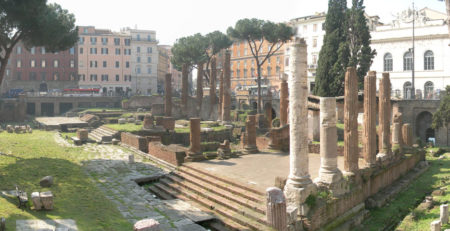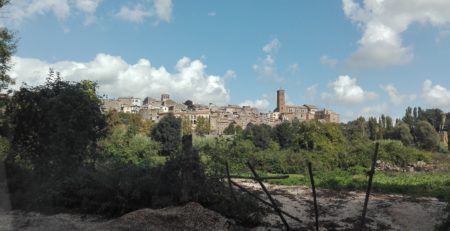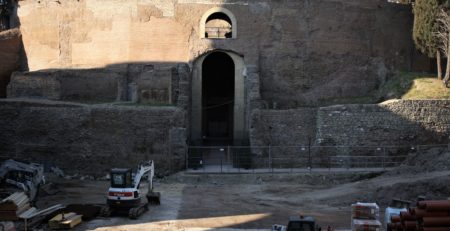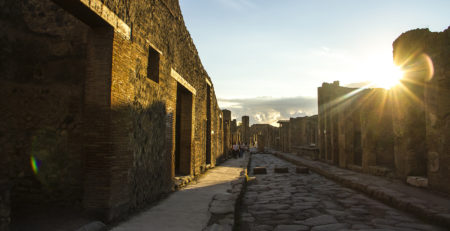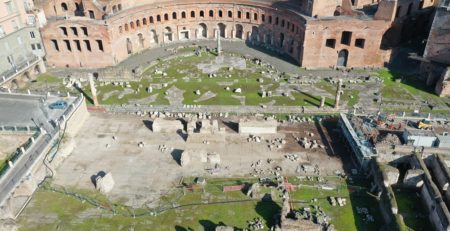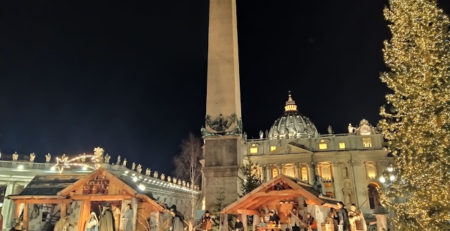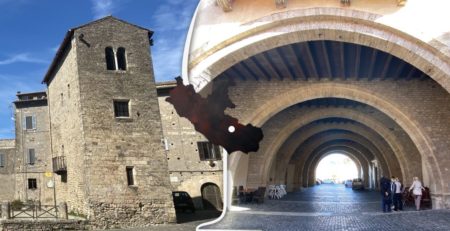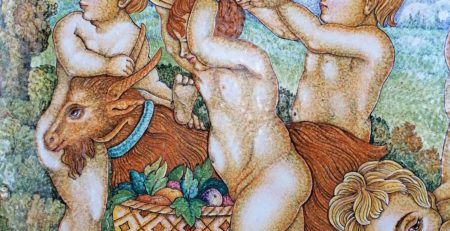Santa Maria Sopra Minerva (Mary above Minerva)
Santa Maria Sopra Minerva
One block behind the Pantheon, Piazza della Minerva, there is a church above an ancient Roman temple, with a Michelangelo statue in it.
The church dedicated to Saint Mary is built directly over the ruins or foundations of a temple dedicated to Roman goddess Minerva. While many other medieval churches in Rome have been given Baroque makeovers that cover Gothic structures, the Minerva is the only extant example of original Gothic church building in Rome, behind a restrained Renaissance style façade.
In Roman times there were three temples in what is now the area surrounding the basilica and former convent buildings: the Minervium, built by Gnaeus Pompey in honour of the goddess Minerva about 50 BC, referred to as Delubrum Minervae; the Iseum dedicated to Isis, and the Serapeum dedicated to Serapis.
In 1665 an Egyptian obelisk was found, buried in the garden of the Dominican cloister adjacent to the church. Several other small obelisks were found at different times near the church, known as the Obelisci Isei Campensis, which were probably brought to Rome during the 1st century and grouped in pairs, with others, at the entrances of the temple of Isis. There are many ancient Roman findings in the crypt.
The ruined temple is likely to have lasted until the reign of Pope Zachary (741-752), who finally Christianized the site, offering it to Basilian nuns from Constantinople who maintained an oratorium there dedicated to the “Virgin of Minervum.”.
In 1255 Pope Alexander IV established a community of converted women on the site and a decade later this community was transferred to the Roman Church of San Pancrazio thereby allowing the Dominicans to establish a convent of friars and a studium conventuale there.
Aldobrandino Cavalcanti (1279), vicar for Pope Gregory X, donated Santa Maria sopra Minerva to the Dominicans of Santa Sabina by the sisters of S. Maria in Campo Marzio. The Dominicans began building the present Gothic church in 1280 modelling it on their church in Florence Santa Maria Novella.
Between 1848 and 1855 Girolamo Bianchedi restored the building, removing Baroque additions, and the blank walls were covered with neo-gothic frescos giving the interior the Neo-Gothic appearance that it has today.
The basilica’s brilliant 19th century stained glass windows are quite rare for Rome.
What is there to see inside this beautiful church?
Michelangelo statue
Among several important works of art in the church are Michelangelo’s statue Cristo della Minerva (1521) and the late 15th-century (1488–93) cycle of frescos in the Carafa Chapel by Filippino Lippi. The basilica also houses many funerary monuments including the tombs of Doctor of the Church Saint Catherine of Siena (1347-1380), who was a member of the Third Order of Saint Dominic, and the Dominican friar Blessed John of Fiesole (Fra Giovanni da Fiesole, born Guido di Piero) better known as Fra Angelico (c. 1395-1455).
Tomb of Beato Angelico
Beato Angelico’s work can be seen in the Pantheon, one block away from Santa Maria Sopra Minerva,
Fra Angelico was an Early Italian Renaissance painter described by Vasari in his Lives of the Most Excellent Painters, Sculptors, and Architects as having “a rare and perfect talent”.
In 1982 Pope John Paul II beatified him.
Tomb of Saint Catherine of Siena
Saint Catherine of Siena was a tertiary of the Dominican Order and aScholastic philosopher and theologian. She also worked to bring the papacy of Gregory XI back to Rome from its displacement in France and to establish peace among the Italian city-states. Since 18 June 1939, she is one of the two patron saints of Italy, together with St. Francis of Assisi.
St Catherine died in Rome, on 29 April 1380, at the age of thirty-three.
Book the Italy’s Best Rome Baroque Walking tour and visit this beautiful church.








